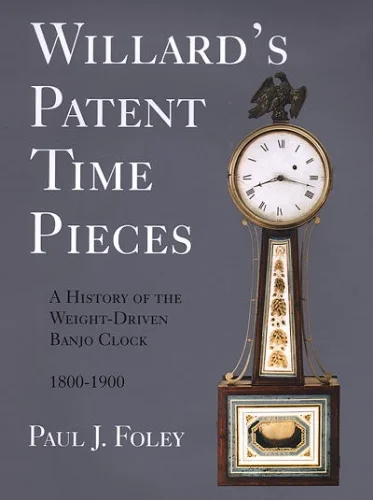Shop
A Study of Simon Willard's Clocks
A Study of Simon Willard's Clocks
(from the dust jacket flap)
Many people may feel that everything about Simon Willard's clocks had already been told and retold. In reality this subject has only been treated quite superficially in the past; consequently, this study will surprise them. It makes use of primary source information obtained from many Willard clocks. All of the second and third hand Willard references were ignored. By means of this basic and analytical approach, the authors have introduced a completely fresh new concept of Simon Willard's clock designs and of the man himself. Willard's sources of ideas and how he carried them out is the essence of this book.
Simon Willard's achievements during his sixty very active years as the first developer of American clocks have finally been recognized in this volume. All of the eight major clock types that he designed are included under separate chapters in which the beginning and evolution of each kind is thoroughly discussed. Part of the appropriately illustrated discussion is intended to help the reader to understand clockmaking as it existed in Willard's time, particularly in England and France. Willard's work is then compared by word and photograph against that background.
A new image of Simon Willard has emerged showing that most of his creations are readily traceable to European origins. Thus, it has become apparent how he arrived at the case designs of his Grafton, Massachusetts shelf, banjo, gallery, lighthouse, and tower clocks. The development of Willard's clock movements is also described in detail, including early and unusual ones. Examples of cases and movements by contemporary and other makers are included for reference. Willard's leadership for making small clocks in this country has been made quite obvious.
Recreating Willard's activities is a bit like viewing an unfamiliar place through the wrong end of a binocular with only a limited number of looks. The whole picture is not always attainable in this way, and so questions remain such as: can Willard clocks always be identified, or what did Willard's clock jack look like? Such questions are answered indirectly by showing for comparison items that were produced by other workers. Readers are encouraged to acquire more perspective in order to understand better the many interesting details that constitute a clock whether it is a Willard or some other. This study may be read and appreciated many times over as one's knowledge of old clocks increases.
R. W. Husher is a mechanical and electrical engineer by profession. By avocation he has restored many and often exceptional clocks in his own machine shop. W. W. Welch is a business man, recently retired, with a long standing interest in early clocks that were made in the Boston area. He has donated several important clocks to the White House and to the Supreme Court. Together these men represent well over fifty years of eagerly acquiring knowledge about old clocks which they trust will not stop here and which they are pleased to share with friends of similar interest.






